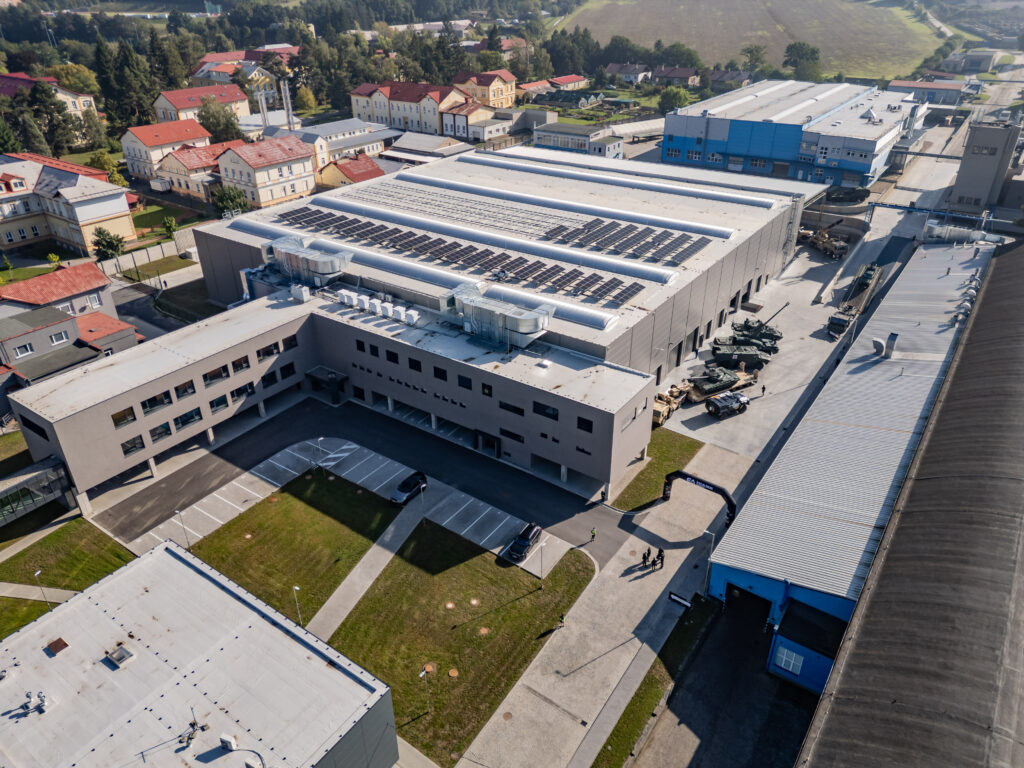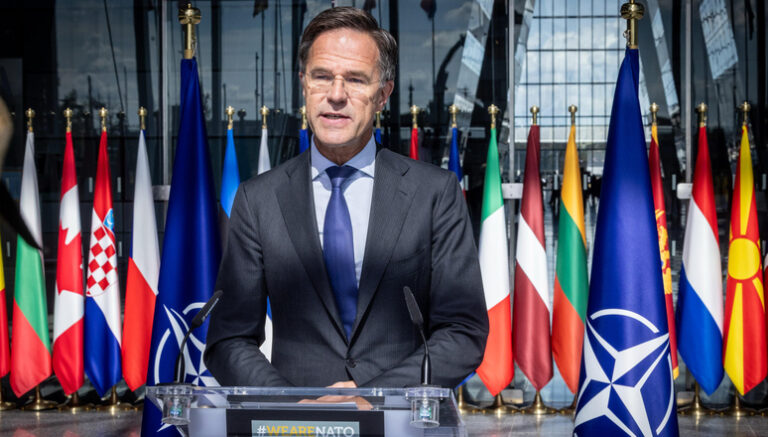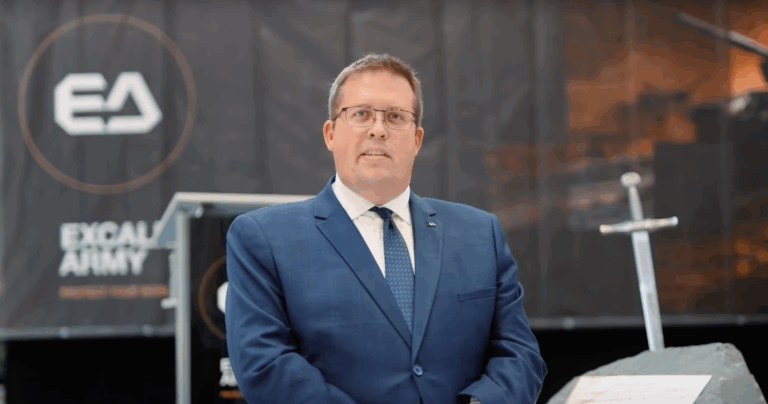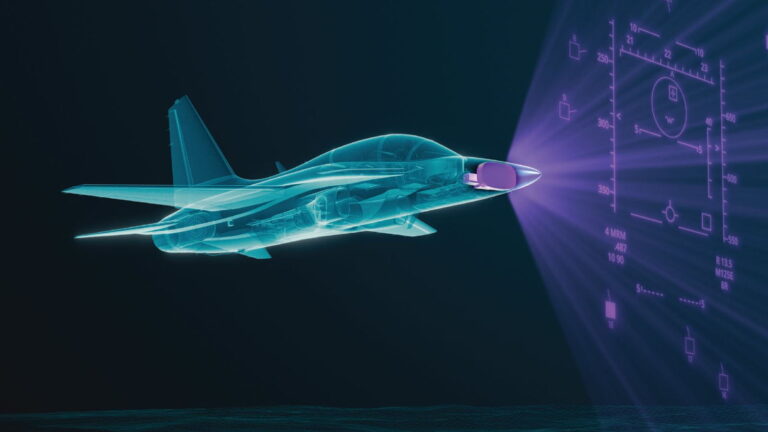
A Czech manufacturer strengthens its role in the European defence infrastructure
The interview with Pavel Doško, Commercial Director of Excalibur Army and Director of Land Systems Business Development at CSG Defence, was conducted in October 2025 at the company’s production site in Šternberk. The discussion focused on Excalibur Army’s transformation from a traditional producer of armoured vehicles into a modern European systems integrator, capacity expansion, cooperation with European partners, and the growing importance of dual-use systems for defence and emergency services.
A new chapter in Šternberk
When the new 6,600 m² assembly hall opened in September, it was clear that Excalibur Army was entering a new stage of development. The hall represents not only an expansion of production capacity but also a move toward deeper integration of heavy land systems manufacturing within the Czech Republic.
“Our existing space was reaching its limits. We can now run up to four parallel assembly lines; previously it was at most three, realistically two,” says Pavel Doško. He notes that the increase cannot be expressed simply in units per year—it depends on the complexity of each platform and on the supply chain. “You can have a perfect line, but if components are missing, you’re stuck. That’s doubly true in defence.”
The new hall is the company’s first fully greenfield assembly capacity. It is engineered to handle the heaviest tracked platforms, including Leopard 2 tanks. Floors have increased load-bearing capacity, overhead cranes are installed, and the facility is prepared for integrating large modules—activities that were difficult to realize domestically in the past.

Přelouč: from workshops to a production hub
Growth in Šternberk is complemented by the expansion of the Přelouč site. “A few years ago it was a small workshop for about twenty people. Today more than 150 employees work there, and the number is still growing,” Doško says.
The site now handles parts and machining work and functions as an organic element of Excalibur Army’s production system. Nearby is Truck Service Group, another CSG company involved in select projects. “We don’t consider Přelouč a branch—it’s part of a single production platform,” Doško emphasizes.
Ukraine: partnership in practice, not just headlines
Excalibur Army’s activities in Ukraine are often discussed, but the reality is more complex than headlines suggest. “Our Ukrainian subsidiary and the joint ammunition production project with Ukrainian Armor are two completely separate undertakings,” Doško explains.
The in-country office serves as an interface between manufacturer and user—collecting feedback, tracking operational experience, and maintaining contact with both military and civil customers. “In Ukraine it’s not only the army that operates; there’s a whole structure of security forces under the Interior Ministry. Our aim is to stay close to everyone who actually uses our equipment,” he adds.

Leopard 2: a Czech hub for maintenance and overhaul
A major milestone this year was the signing of a memorandum of cooperation with KNDS Deutschland, opening the path to building domestic capabilities for the maintenance and overhaul of Leopard 2 tanks.
“Our goal is to avoid sending the Czech Army’s tanks back to Germany—we want to service them at home,” says Doško. The cooperation may extend to a broader European role. “If an export servicing opportunity opens up, we have the capacity and the technical base.”
The new assembly hall in Šternberk was designed with heavy tracked equipment service in mind. Combined with the company’s experience in repairing and upgrading artillery and armoured vehicles, it forms the foundation for a potential Czech Leopard 2 service centre for Central Europe.
CV90: transferring know-how from BAE Systems
Participation in the CV90 CZ program for the Czech Army is a significant step for Excalibur Army not only in production but also in processes. “Working with BAE Systems gave us insight into how Western manufacturers manage quality, traceability, and auditability—often beyond ISO 9001 or AQAP 2110,” Doško says.
Excalibur Army manufactures and completes the CV90 turret modules—not just mechanical assembly but full integration of subsystems. Final vehicle integration is performed by VOP CZ.
The project brings know-how transfer in quality management, configuration control, and traceability, strengthening the competitiveness of the Czech defence industry as a whole.
Dita and Morana: next-generation automated systems
In artillery, Excalibur Army positions itself as a European innovator. The Dita 155 mm howitzer is now in serial production and has been fielded, among other places, in Ukraine via a Dutch procurement.
It is followed by the Morana 155 mm howitzer, developed as a fully automated next-generation system. “The first Morana was a technology demonstrator. Today’s Morana 2 is a pre-series system tested from –32 °C to +50 °C,” Doško notes.
Both howitzers feature an advanced ballistic computer and automated loading. The crew operates entirely from the cabin, and selection of ammunition and propellant charges is digitally controlled. Dita and Morana can deliver fire in MRSI (Multiple Rounds Simultaneous Impact) mode—multiple rounds on differing trajectories striking the same target at the same moment.
“They manage up to six rounds in the first minute and about five sustained. And during impact they’re already relocating to a new firing position,” Doško adds.
CAESAR 8×8: French technology, Czech realization
Another key program is CAESAR 8×8 for the Czech Army, developed with KNDS France. Excalibur Army performs final assembly from components supplied from France and by Czech subcontractors—typically Tatra Force 8×8 chassis and cabs from Tatra Defence Vehicle.
“A French KNDS team works on site with us and oversees process and quality. The program is proceeding according to the joint schedule,” Doško says. The first CAESAR assembled in the Czech Republic was presented to the public at the opening of the new hall.
Engineering and special vehicles: dual use as a strategic advantage
Beyond weapon systems, Excalibur Army’s portfolio includes engineering, rescue, and decontamination vehicles—a strategically important, truly dual-use segment serving both armed forces and integrated rescue services.
Flagship products are the AM-50 EX and AM-70 EX bridge vehicles on Tatra chassis, enabling modular bridge systems up to 106 metres in length. The bridge decks meet MLC 50 and MLC 70, sufficient for most military and rescue equipment.
These systems have been used during natural disasters in the Czech Republic; following floods in the northeast in 2024, the Fire Rescue Service ordered the first AM-70 EX units. Exports target Southeast and Central Asia, including Indonesia.
The company also builds DECON decontamination vehicles on Tatra chassis for operations in chemically contaminated areas. The first units were delivered to customers in East Asia, and production has begun for the Czech Army as it renews CBRN protection assets.
Another dual-use example is the Triton—an armoured patrol and intervention vehicle on the Patriot base with a 2,000-litre water tank and crew protection in high-risk areas. The Czech Fire Rescue Service currently operates two Tritons; the third is scheduled for delivery by the end of this year. Further units are being produced for domestic and foreign customers. The first vehicle is operating with firefighters in Brandenburg, Germany, and additional deliveries are headed to Poland.
Export continuity and new markets
Excalibur Army builds on long-term relationships. “We supplied Ukraine long before the war—for example BVP-1 and 122 mm Gvozdika systems. The DANA M2 howitzers were not supplied before the war; Ukrainian forces only tested them then. Actual deliveries of DANA M2 and modernised T-72 EA tanks began during the conflict,” Doško recalls.
The company focuses on markets in Southeast Asia, the Middle East, Africa, and Europe. Deliveries include systems for the United Arab Emirates, Indonesia, Poland (licensed Patriot 4×4 armoured vehicles), and Vietnam, where Excalibur Army bridge equipment appeared in a military parade this year.
People and synergies within CSG
Rapid growth creates demand for specialised skills. “We cover more than eighty professions at Excalibur Army—from mechanics, electricians, and hydraulic specialists to designers and CNC programmers. Finding qualified people is increasingly difficult,” Doško says.
The company responds not only with competitive pay but above all with meaningful work. “Our people can see that what they build is actually used—and often saves lives,” he adds.
Synergies within the Czechoslovak Group (CSG) play a major role. Excalibur Army shares capacity with Tatra Trucks and Tatra Defence Vehicle on chassis and cabs, and cooperates with MSM Land Systems on engine overhauls and specialised components. This ecosystem supports a high level of localisation while keeping firm control over quality and the supply chain.

A person who doesn’t look for problems
Pavel Doško has been with Excalibur Army since 2017 and has led the commercial organisation since September 2025. “Every day is different. I treat obstacles as challenges—I don’t look for problems, I look for solutions,” he says calmly.
He answers thoughtfully, sometimes indirectly, but always to the point. “See?” he smiles. “You ask about one thing, I answer differently—and we still arrive exactly where we need to be.”
That attitude captures the company’s ethos: don’t force it head-on—change the angle until you hit the target.
Conclusion: Czech industry as an integrator
Today Excalibur Army stands between a traditional manufacturer and a modern European integrator of land systems. New production capacity, cooperation with European partners, and growth in dual-use technology demonstrate that the Czech defence industry can play an active role in building European defence autonomy.
“Our goal isn’t to chase as many orders as possible,” Doško concludes. “The goal is to build capabilities—so partners can rely on us when needed. From manufacturing to a complete system.”
By: Katerina Urbanova







